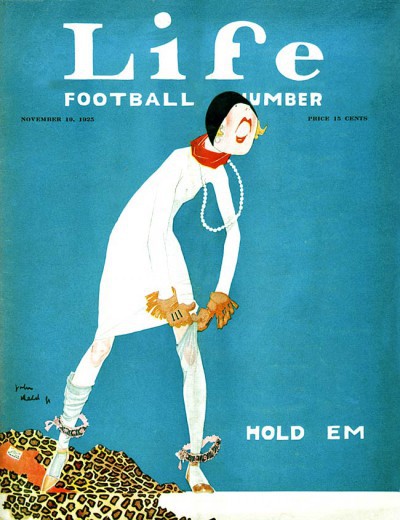
John Held Jr
About
John Held Jr. was the illustrator who can be said to have defined the look of the "Roaring Twenties".
He was a child prodigy. He sold his first drawing at the age of nine. He sold drawings to the original Life magazine at 15, and was hired as the sports cartoonist for the Salt Lake City Tribune when he was 16.
In his teens he studied art briefly with sculptor Mahonri Young. In 1912, at the age of 23 John Held went East to New York. He spent the early days doing advertisements and trying to break into the magazine market. In 1915 he started appearing in Vanity Fair and in 1917, in House and Garden. In 1921 he drew for Century Magazine and in 1925 for the new magazine called The New Yorker.
His most famous and well-known drawings appeared on the cover of the original LIFE magazine.
John Held's cartoons WERE the Jazz Age. His "flapper" summed up the whole decade. It seemed as if the fun would never end. But when the Stock Market crashed in 1929 and long skirts came in during the 1930's, John's drawings seemed out of date and not interesting.
He continued to do commercial artwork throughout the 1930's and published several books, but it wasn't until the end of the decade that he again reached the top. In 1937 he did the sets for "Hellzapoppin" a very successful Broadway show. In 1939 Held exhibited sculpture, small bronze horses which was some of his most heartfelt work. In 1940 he became artist-in-residence at Harvard and the University of Georgia.
1942 was one of the happiest years of his life. He made a happy third marriage to Margaret (Maggie) Schuyler. He had been married twice before, from 1918 to 1931 to Ada Johnson, from 1932 to 1935 to beauty queen Gladys Moore, but both these marriages ended in divorce.
During World War II, John and Maggie worked for the U.S. Signal Corps. After the war, Held found himself "rediscovered" and his drawings and woodcuts began to be shown in galleries. He was becoming important again.
One of his most popular books was "Held's Angels" published in 1952.
John Held Jr. died on March 2nd, 1958.